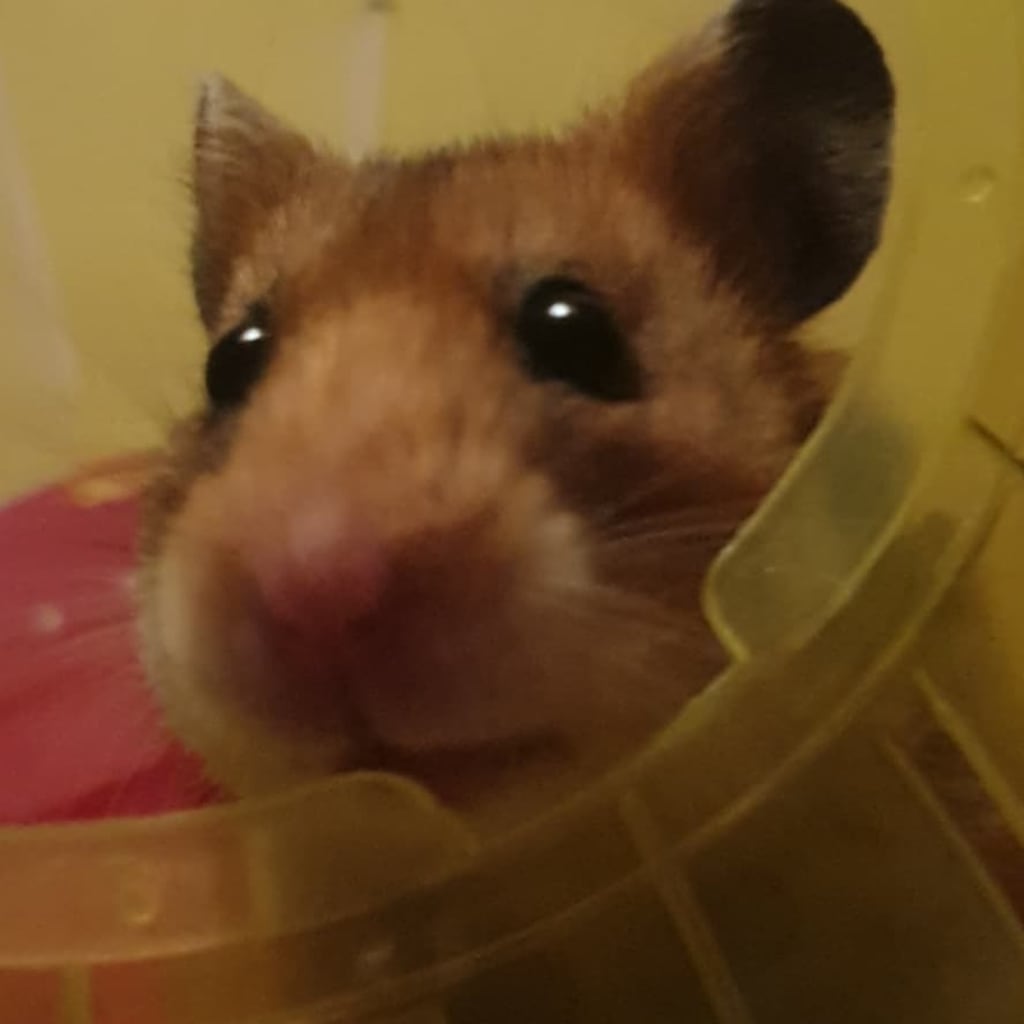How I Care for my Syrian Hamster
And make sure they have fun!

Gorgeous, aren't they? Tiny little mouse-like creatures with pink noses, minute paws, fluffy coats and big beautiful eyes. I often find myself wondering how one little animal could be so adorable and bring you so much joy. They are wholly oblivious and unaware of their significance to you, yet sometimes it almost feels like they're trying to make you smile. Of course, they're just being their little clumsy selves, but it doesn't make it any less wonderful.
But what one must remember with these little guys is that, despite their size, they do require a good amount of care and consideration. They need exercise - a lot of it - regular feeding, cleaning, and sometimes grooming. So, in this short and sweet piece, I'm going to tell you all how I care for my little hamster, Minnie.
Feeding
I read on many sites that hamsters need to be fed every single day. When I had my first hamster, several years ago, I wholeheartedly agreed with this. Of course, I was young, clueless, and I'd never had a hamster before. But, what you soon will realise with your furry friend is that, unlike cats or dogs, hamsters love to hoard. They don't simply receive their food, eat it, and go on their merry way. No, hamsters enjoy storing their food, either in the corner of their cage, their bed or another safe place in their enclosure. What one must keep in mind is that hamsters don't eat very much at any one given point. You'll often find them snacking on a few pellets of food and then stuffing the rest in their cheeks. And this hoard they create can take a few days to get through. So, if you have a standard sized hamster bowl (about the width of an apple), and you fill it completely each time you feed your hamster, I can assure you that you do not need to feed them daily. I personally would recommend a space of 2-3 days between each feed.
Treats
Something hamsters do indeed love are treats! Now, hamsters can actually eat a lot of food humans eat, but not all. The main culprit here is chocolate. While it may seem a nice idea to treat your furry companion with a little nibble of chocolate, this is a bad idea. Chocolate can be harmful, and sometimes lethal to hamsters. So stay away from that particular human luxury! Other things I wouldn't recommend are garlic, almonds, lettuce and onion. On the other hand, hamsters do love apple, grapes, peaches, strawberries and mango. I also occasionally feed Minnie some cheddar cheese, but not too often!
Personal hygiene
Thirdly comes hygiene. One thing I cannot stress enough to you here is that you do not need to wash your hamster. Hamsters are completely self-sufficient when it comes to their own personal hygiene. You do not need to bathe them, lather them, or put them in water. This, in fact, could do more harm than good. Hamsters are susceptible to colds and pneumonia. And, if you bathe your hamster and leave them damp, they can very easily catch a cold, and this can be fatal. Also, hamsters have very important essential oils in their furry coats. Washing your hamster decreases the amount of oil in their coat, which is also harmful to our furry friends. Of course, if your hamster happens to jump head first into a tub of melted chocolate, then a clean may be in order. However, in their day to day lives, these little guys can hold their own.
Enclosure hygiene
Though hamsters do keep themselves clean, the same unfortunately cannot be said about their enclosures. Like every other pet, hamsters urinate, and hamsters produce faeces. Luckily for us, hamster faeces come in the form of small, solid pellets, which makes handling of their waste much easier. But these pellets build up quicker than you think, and it is always a good idea to check the cleanliness of your hamsters cage very regularly. However, I must say that it is not essential to clean your hamster's cage every single day. Not only is this a waste of sawdust and bedding, but it wastes time you could be spending playing with your paw pal! I personally clean Minnie's cage every 3 or so days, as I think this is the perfect balance between not being wasteful and, more importantly, not being negligent.
Play time

Now, finally, the fun part. Play time! Hamsters, especially in their earlier months, love to run. They have heaps of energy that they want to get rid of. You see, in the wild, hamsters run miles a day. And, while this is obviously not the case for domestic hamsters, you still need to give them a good space to run around in. Now, this is where the ball comes in. Hamster balls have been a topic of debate for years in the community, and I can see why. They can be restrictive to your friend, as they cannot run naturally with their nose to the floor. It also can be daunting for your little guy to run around in a sphere thrice his size! But I do think this all comes down to the preferences of your hamster. I find that my little girl, Minnie, absolutely loves it! She leaps into the ball when I hold it in front of her and spends hours running around in it. But even if your hamster does enjoy their ball, you must ensure that the terrain they are running on is safe and clean. It is also paramount that you keep an eye on your hamster while they are in the ball, as they are known to break apart, leaving your little friend to run around the house completely unknown to you (believe me, I've been there!).
If your hamster does not like the ball (either avoids entering it, or remains still while in it), then I'd suggest cordoning off a safe patch of floor in your house with either a store-bought hamster pen or something similar. Of course, they won't have as much space to run around in as they would in the safety of a ball, but it still allows them to spend a little time outside of their enclosure. In this play pen you can put treats, toys, anything you think your little pal will enjoy! But, once again, do not leave your hamster to their own devices here. Hamsters are nifty little climbers, and you'd be surprised at the heights they can overcome.

I think the most important thing to do with your hamster is take the time to figure out what they do and do not enjoy, in all aspects of their lives. Make sure your hamster's cage has enough, but not too many, gnawing/chew toys, tubing or huts/houses, so that they have plenty to do in the night when you are asleep, and they, being nocturnal, are wide awake! At the end of the day, just treat your hamster like a little person, with their own likes and dislikes! You'll both have a lot of fun together.
About the Creator
Enjoyed the story? Support the Creator.
Subscribe for free to receive all their stories in your feed. You could also pledge your support or give them a one-off tip, letting them know you appreciate their work.






Comments
There are no comments for this story
Be the first to respond and start the conversation.